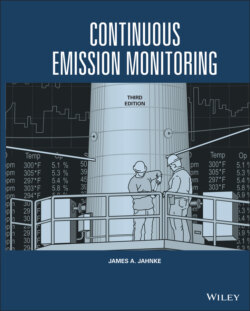Читать книгу Continuous Emission Monitoring - James A. Jahnke - Страница 48
QUALITY ASSURANCE REQUIREMENTS
ОглавлениеThe earliest applications of CEM systems in the 1970s were often met with frustration. Systems were installed and certified, but over a period of time began to fail. Either inconsistent data or no data would be generated. Often, the monitoring systems behaved so poorly that the data would not be accepted by control room operators. The problem was not so much in the instrumentation itself, but in misconceptions in how the systems operated. CEM systems were viewed as just another plant sensor, such as a thermocouple or pressure gauge – once installed, it would be expected to function for an extended period of time; failure could be corrected by a simple replacement. CEM systems, however, are more complicated than sensors. If not serviced periodically, serious corrosion and plugging problems can result, which can lead to a breakdown of the system. Failures cannot always be corrected through simple replacement, but instead may require expensive repairs and recertification.
The realization came quickly that in order to continue operating, a CEM system must be maintained continually (Jahnke 1986). Periodic inspections, a preventive maintenance program, and performance assessment procedures are all necessary for a CEM system to provide quality data on a continuing basis. These are the elements of a quality assurance program.
A quality assurance (QA) program requirement should be either part of an implementing rule or referred to in an appendix, as are the performance specifications in the NSPS requirements. QA requirements should include the preparation of a QA manual that describes the quality assurance and quality control procedures that will lead to optimum data quality for the CEM installation. Quality control procedures should detail the calibration methods, preventive maintenance activities, data back‐up procedures, and so on. Periodic audits such as systems audits and performance audits mandated by the regulatory agency should be part of the plan. Performance audits that use independent audit materials (e.g. calibration gases) or independent test instruments are recommended for providing quantitative assessments of data quality. Systems audits conducted by either internal or external auditors provide an assessment of whether the QA program has been implemented and is operating effectively.
